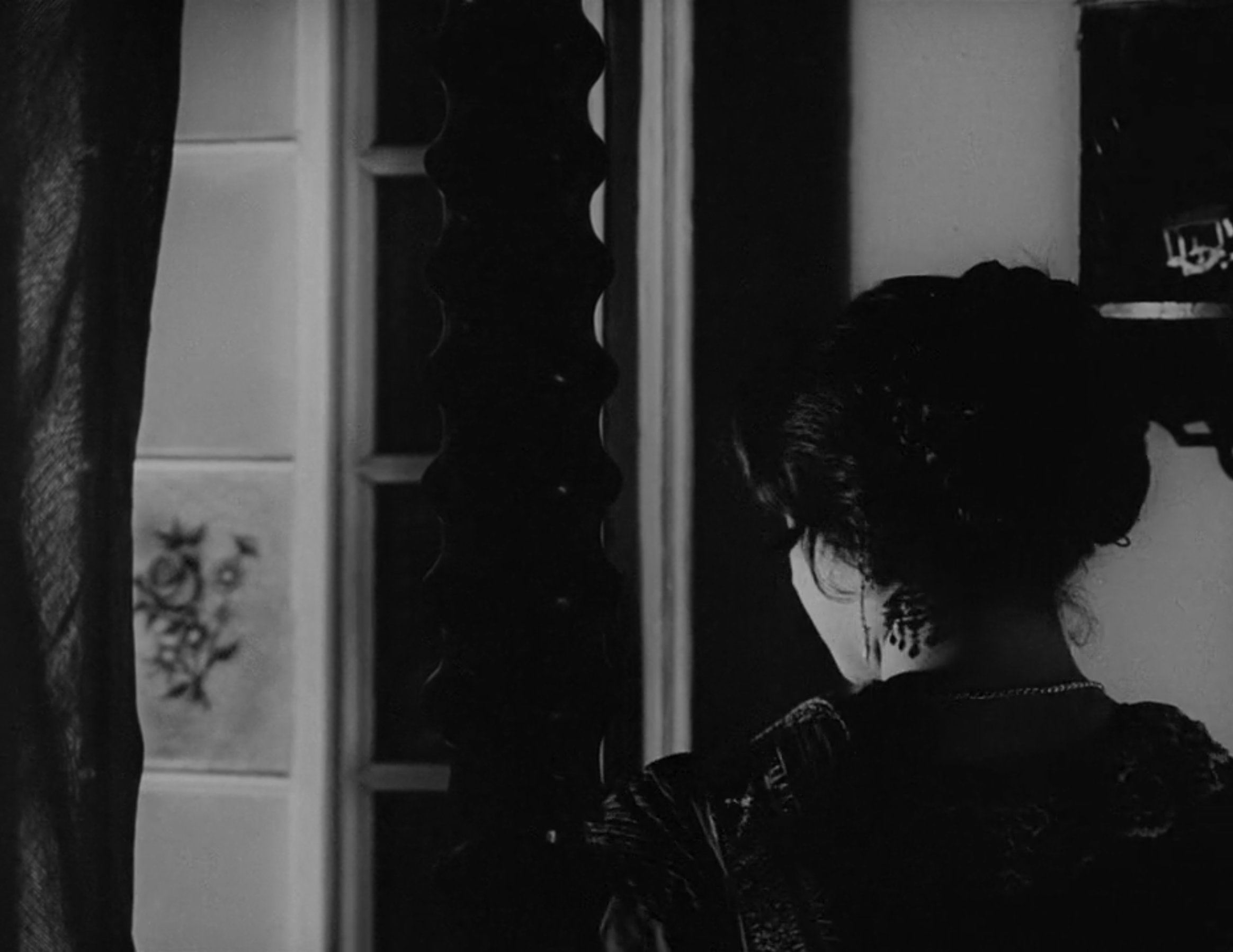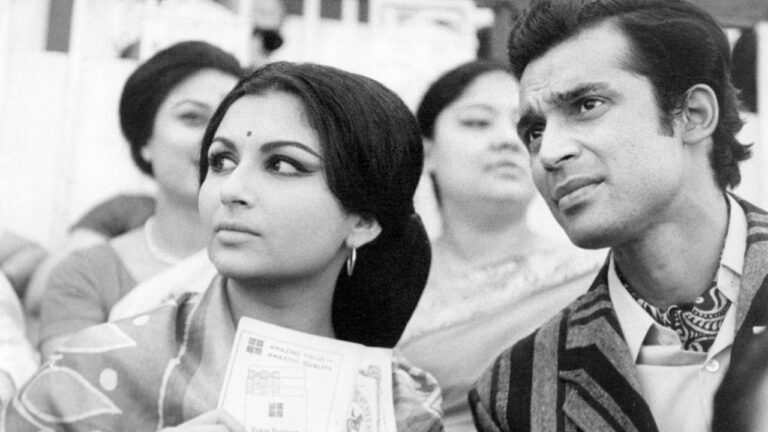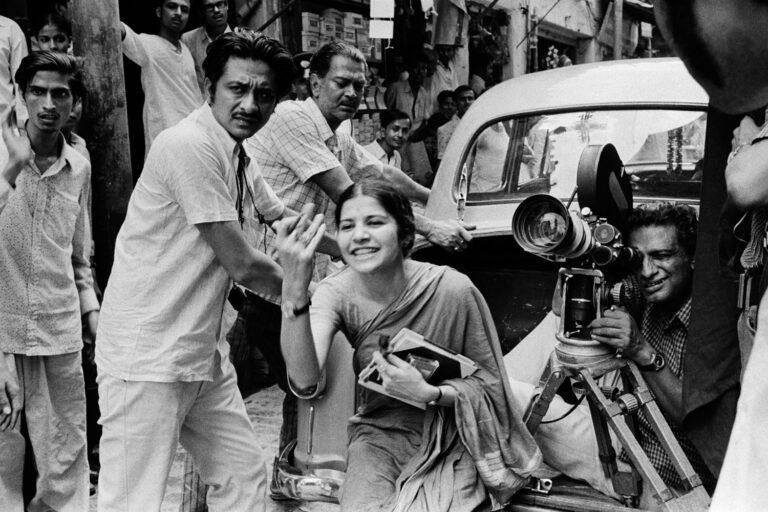When pressed for an answer by his interviewers, Ray was never hesitant. He’d say “Charulata” to the question that wishes to establish his favourite amongst his own. Probed further, he’d say “It’s because it has the least flaws”. However, Ray isn’t letting on a lot behind his sparse answer. His film, when watched, would answer the question of favouritism. Charulata is certainly a refined filmmaker’s take on the home and the world, but beneath the veneer of all that it straddles, there’s a layer of warmth that represents the comforts of a man whose life is encircled by books. In Amal’s speech, his musings, and playfulness, there’s a part of the Ray who purveys books and glances at the world while lying down on Indian heath.
Charulata, within his own filmography, is an allegorical departure from the bird’s nest. Mahanagar, though preceding it, is still a shade more Indian in its exploration of the working woman’s reality. Here, however, the qualities of the film are more Western than ever, drawing from Bengal and India only for the mood of colonial emancipation. If one were to transpose the film and its milieu with that of Victorian England, it wouldn’t be wholly lossless, but it would still function as a display of fractured trust and unfulfilled love. By setting it in India, he captures the emergence of a cosmopolitan sect in society that is fascinated by Burke and Shakespeare but remains entrapped by Bankim and Tagore. The conflict of these two worlds has carved an India that has evolved over two centuries. I’m a part of it, and so was Ray. It’s a bittersweet state where you’re neither fully here nor there, but when a tipping point comes, the blandishments of its promise are futile against your love for your own soil. The schism that it imposes on one is central to Charulata and Ray does a masterful tour of this sweeping phenomenon that has tugged at him and many more to this day.
Charulata, foremost, is a furtive portal into a woman’s indisposition as a wife in 19th century Bengal. Charu herself isn’t furtive, though she swirls her binoculars and flocks from window to window like a house pet. She watches as her husband walks past her, aware of her presence in the house but unaware of her breath as she stands beside him. She’s free to read all the verses that collect cobwebs on his shelf, but she can never express their beauty to him. She suffers from a loneliness that cannot be disclosed lest it disturbs her husband. When she flies through the unkempt garden on her swing, she watches a young mother and her child – a reality that is forbidden to her due to his preoccupations. In Aparajito and here, the disheartening reality of the woman of the house is not so much her struggles, it’s their patent neglect. Without the need to be overt, Ray has a moment of truth in both films for these men; a moment where the brightness of dereliction lacerates their senses.
Where Charulata differs from Ray’s earlier works is largely a by-product of its cosmopolitan subject. When Amal first arrives, he stretches back on the chair and discusses Bengal’s literary canon. He asks his sister-in-law, the traditional woman to leave the room to allow literary discussions between Charu and himself. She refuses, and they continue their conversation. He asks her opinions about the new crop of writers; she responds that she’s still a captive of Bankim’s descriptions. When their interchange is cut short by Manda’s snore, he quips about the state of our traditional women. In his eyes, Charu is a modern woman, but she’s still rooted in the conventions of marriage. She can appreciate beauty; she can’t reflect it. It isn’t until she publishes her essay in the Philanthrope does she become visible to the men in her world. It dispels the notion that neither does being traditional nor does being a woman preclude one from reflecting nature’s beauty. To write verses in praise of creation isn’t solely man’s dominion and doing so isn’t the only measure of one’s value.
Ray’s statement that Charulata is his least flawed film also has merit. There’s a sense of refinement that comes from collaborating with Bansi Chandragupta to work solely in well-constructed studios. Though Ray was accustomed to shooting many of his films – Jalsaghar included – on location, he was already gravitating towards controllable environments in his established years. He uses the refinement that the sets give to him and exploits it with an expert foreground-background blocking of his actors. When Amal and Charu are in the garden, we see Amal lying on the ground and Charu swinging behind him, focused out of the frame. When the gaze is reversed, we only see Amal in the middle ground. Charu is seeing him through her binoculars, another subtle emphasis of her ignored existence. It isn’t a question of whether Ray has outdone himself in Charulata, it is a question of how often he faltered. These touches of compositional awareness were always there since Pather Panchali. It’s only the incidence of error that has reduced with the benefit of age in directorial years.
Perhaps, the largest sense of Westernness comes from the characters’ repartee. It’s the witty, almost epigrammatical speech ; a type of speech that one can find in Charulata’s then contemporaries such as the free-spirited trio of Jules et Jim or the limitless Marianne and Pierrot from Pierrot Le Fou. It’s the speech of men and women who traipse into the world of art and refuse to leave it; the kind who are fascinated by all the tangents that shoot through it and mimic its ephemerality with their words. It’s laconic but never insipid. It reminds me of the brickbat that Sir Thomas uses to charge Mr. Erskine of Treadley for being removed from reality in The Picture of Dorian Gray. “Mr. Erskine has the world on his shelves. We practical men like to see things, not to read about them” he remarks. It perfectly encapsulates the first volley of exchanges between Bhupati and Amal. The former claims that politics is real and palpable, whereas art is not. Amal doesn’t answer as he continues to play the piano, because with time, the events that transpire show tragedy to Bhupati before art can caution him. We see this between Amal and Charu too, when he asks if she’s read Manmatha Dutta’s Lonesome Melodies, to which she corrects him with a cheerful hum that they are Loathsome Melodies.
At its core, Charulata is faithful to Tagore’s Nastanirh. When we see Bhupati sit down and ask with a shaken voice as to how one is supposed to live or exist in a society without trust, we see Amal tremble and become suddenly aware that he has violated Bhupathi’s trust unbeknown to himself. It’s a question for the ages – can trust ever be unconditional? Bhupathi’s only fault as a husband was being unfaithful to his pursuit, not to another woman. But the neglect in both cases would be the same, and the consequences of it aren’t wildly different. Though Charu represses herself, she gave in to her fledgling emotions for Amal because Bhupati wasn’t forthcoming. She is offended that he’d think of employing Amal to see if she has interests or talents. Some have made the claims that Tagore himself may have had such a liaison with Kadambari Devi, his brother’s wife. Ray chose Nastanirh claiming that the novella had a Western quality, but was he alluding to the fact that it speaks of conjugal mistrust? Certainly, to speak of a rift in marriage was a more invidious subject considering India’s landscape then, but it certainly wasn’t so in Victorian England. The ending of the film is apposite to the eternal uncertainty of trust’s true nature – a freeze-frame that locks in the second before trust is repaired by joined hands. It’s Ray at his finest – always finding the pith of human emotion at the most appropriately vulnerable moment.
I might have jumped the gun with the order of Ray’s films, but I shall be turning to Mahanagar next. Charulata was nonetheless a sweet and serious exploration of life in a changing India with the element of mistrust wove into it in Ray fashion. I’ve had the joy of engaging and enjoying terse speech and Wodehousian languor and I can understand its appeal as much as Ray does. However, Aparajito will always remain the closest of Ray’s works to me, but Charulata and its witticisms aren’t too far removed.





